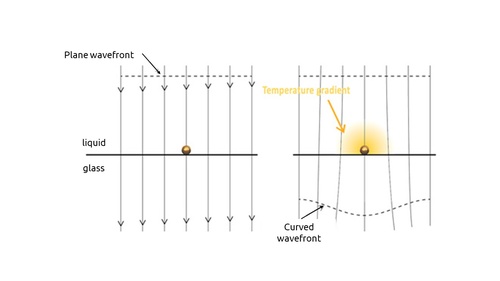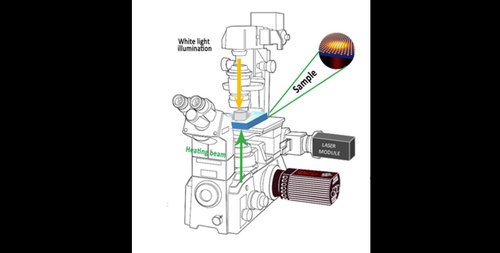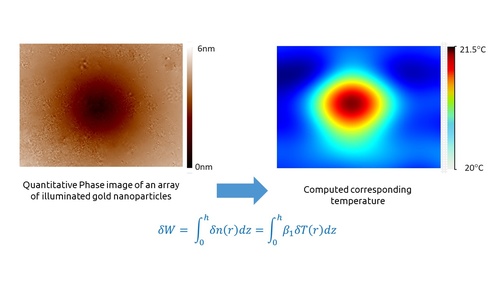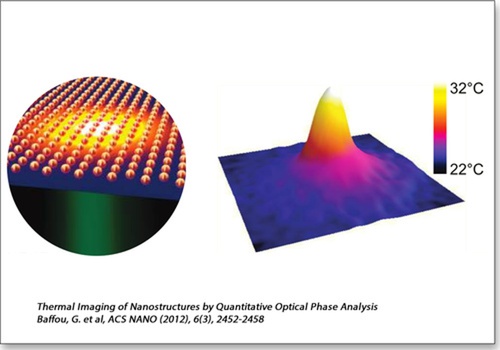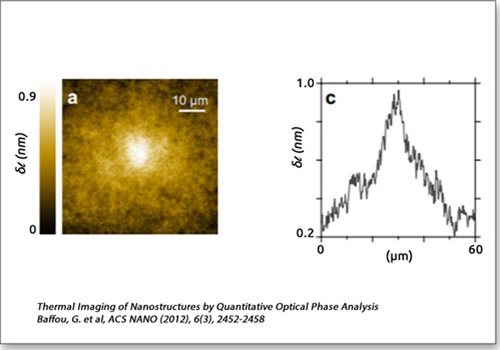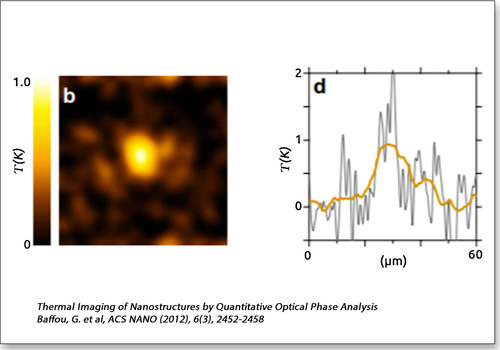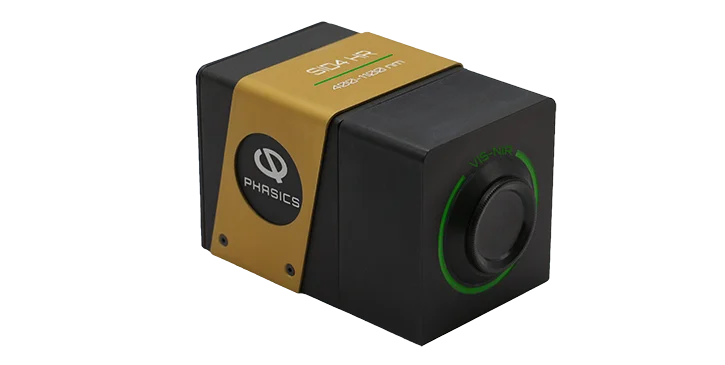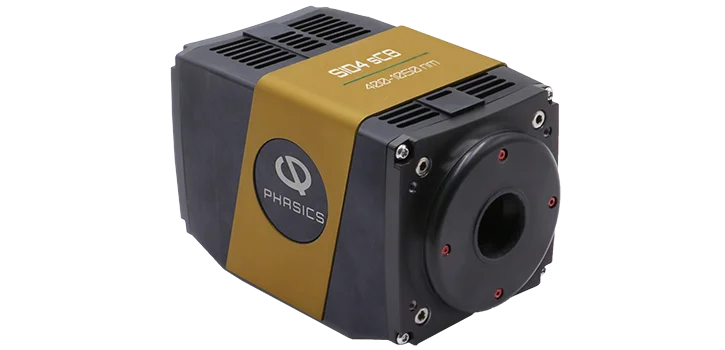The local temperature gradient around a heated sample modifies the refractive index distribution of the surrounding medium. An incoming optical wavefront is thus curved when going through the sample. By measuring the wavefront deformation thanks to our SID4 camera, it is possible to calculate the corresponding temperature variation δT.
Advantages
Easy integration
- Reliable over time
- Widefield technology, no scanning
- Compatible with any optical microscope
Unrivalled performances
- Temperature sensitivity: 0.1K
- Live temperature imaging
- T°variation from ΔT=0k to more 200k
Powerful approach
- Diffraction-limited spatial resolution
- Non-invasive and label-free imaging
- Spatially and temporally localized
